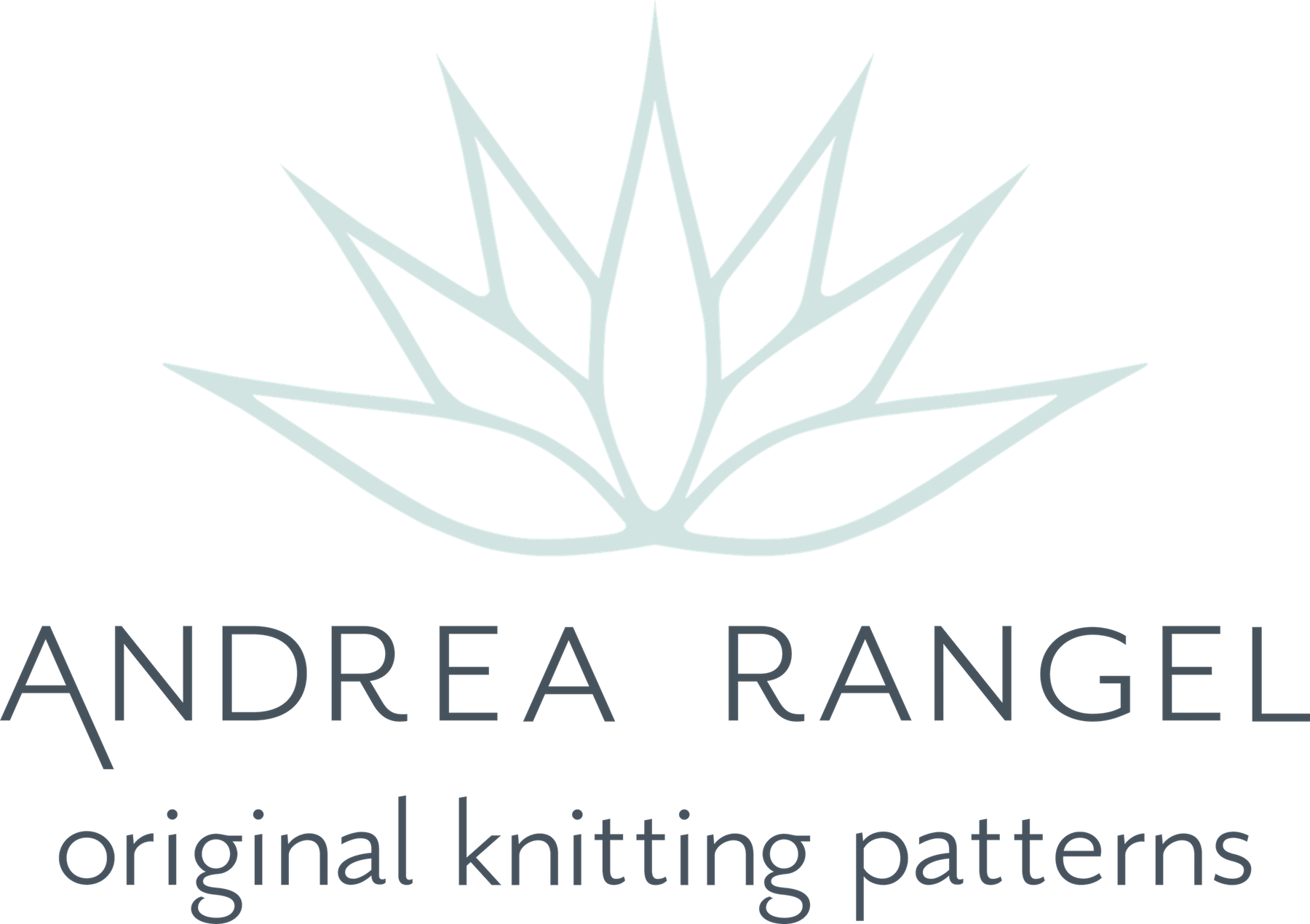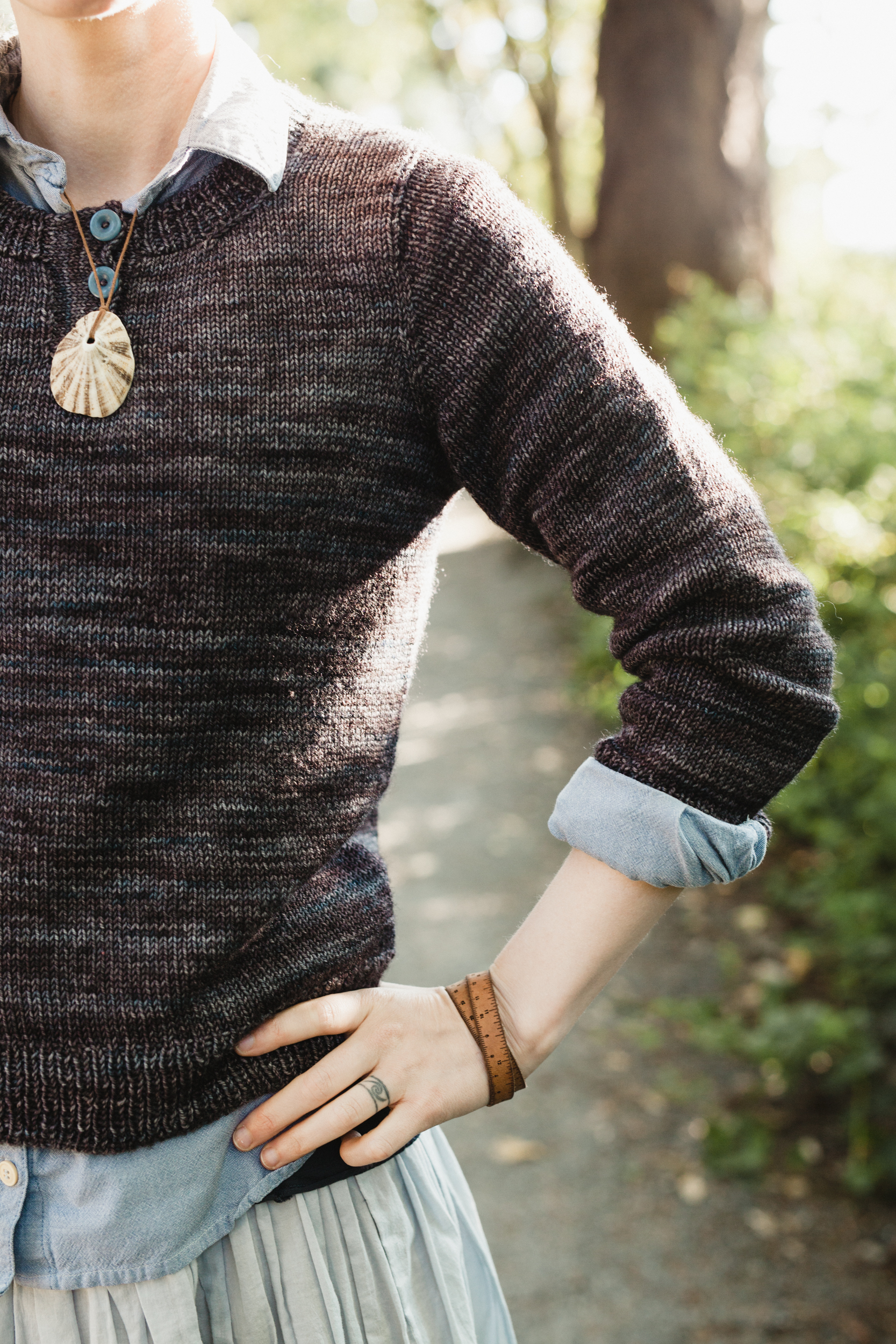Ciomara's Simple Beauty
The Story
Ciomara was designed for my mom as a basic, lightweight sweater that I hoped she'd get a lot of wear out of. That green one in the photos is actually hers, which she kindly loaned to me for the photo shoot. The color is Sage from Hazel Knits in their Artisan Sock base, and she helped to pick it out - I was so happy she'd decided on such a vibrant green, as it's close to the color of her eyes and I think fits into her wardrobe perfectly. My mom is the best person to knit for because not only does she adore everything I do, she also wears the things I give her and brags profusely that I made them, so I'm happy to put in tons of work to make things for her.
As I was working on this design, I knew I'd need one for myself too - that grey one is in Hazel Knits Artisan Sock too, in the color Quill, which plays subtly from charcoal to inky blue. I own a lot of fancy shawls and wraps in a variety of colors, so a neutral sweater is a great wardrobe addition. When I'm home for the holidays, I'm hoping that we can get a twins-ies photo of the two of us in our matching sweaters!
The Details
While this is a basic wardrobe staple, I put a lot of thought into making it special. Here are just a few particular design elements:
Henley Placket
The front has a classic henley placket that's picked up and worked in Stockinette for a flat, clean look. The buttons are slightly offset to add a little style and to keep that lovely flat placket from curling .
Set-in Sleeves & Shaped Shoulders
The body and sleeves are worked in the round bottom-up to the underarms, then the front and back and sleeve caps are worked back and forth in rows. I love this method for a bunch of reasons. First, set-in sleeve construction gives a flattering, classic fit that sits nicely around the shoulders and upper arms. Seams may not be necessary everywhere, but they can offer a great amount of stability at the shoulders and around the armholes, places that have a lot of weight on them from the rest of the garment. I chose to work my samples in a superwash wool yarn, and while Artisan Sock keeps its shape really nicely for a superwash, it's still a bit more slippery than yarns that haven't been treated to be washable, so I like to add a few spots of reinforcement to keep the shoulders from sagging. Another great trick for a better fit in the shoulders is adding a bit of a rise using short rows. That means the the neck side of the shoulder is slightly higher than the outer edge. Since our bodies are generally shaped that way, it's a subtle way of making a relaxed-fitting sweater look like it fits well.
Tubular Cast-on & Bind-off Edges
1x1 rib can be a clean, un-fussy edge, and I think it's at its best when combined with a tubular cast-on and bind-off. The pattern includes instructions on how to work tubular edges, and lots of my testers told me that they'd been nervous to try it, but had great success with my instructions. I think you'll love it too!
Waist Shaping
I was going for a relaxed fit, so the shaping here is subtle. Having it there gives just a little bit more fit at the waist though. I also placed the shaping away from the side seams and a bit towards the centre of the body. This kind of placement matches the body more closely and is generally more flattering than shaping that happens entirely at the side seams. If a sweater is richly-patterned, it's not always practical, but whenever I have a Stockinette stitch canvas, I take advantage of that.
Fit
I designed this sweater to be worn with a bit of positive ease. My sweater (in grey) has about 2.25"/6 cm of positive ease, and the green one shown on Parm has about 3.5"/9 cm of positive ease. I suggest choosing a size that's about 2-4"/5-10 cm larger than your actual bust circumference.
Sleeve and body lengths can easily be adjusted and the pattern instructions include the best spots to add or subtract length.
Yarn Choice
I love Hazel Knits Artisan Sock for this sweater. It's a heavy fingering weight super wash wool/nylon blend that's soft, but it's also got a bit more grip than some SW yarns, plus it's got a lot of tightly-twisted plies, which adds to the resiliency. I'd stay away from anything super slippery or draping, or anything with a languid twist, especially in the larger sizes, as fabric made from those kinds of yarns can grow out of shape over time. Stick with a somewhat toothy wool yarn with lots of plies and a tight twist.
Alternately, you could pick a nice light-weight woolen spun yarn like Brooklyn Tweed Loft. Keep in mind that yarns like that may not draw in as much in ribbing. There's a tip in the pattern for how to deal if your ribbing isn't a whole lot snugger than your Stockinette.
Styling
Ciomara is a great layering piece. I wear mine over a chambray work shirt (that's Archer by Grainline Studio for the sewists in the crowd), and I love how it looks over Parm's turtleneck. But I also wear it just over a tank top a lot, paired with jeans or a skirt.
Get the pattern here on my website or over on Ravelry if you'd like to keep it in your Rav library.







